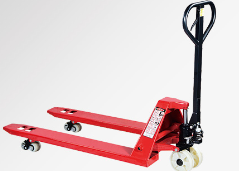News Details
The placement of goods on manual forklifts needs to be taken seriously
When carrying goods, manual forklifts should not only pay attention to whether they are overloaded, but also to the location of the goods. Otherwise, even if there is no overloading behavior, it may pose a safety hazard to the handling of goods, and the goods may be placed incorrectly on the forklift.
There are usually two ways of placement that can pose safety hazards. Firstly, the center of gravity of the goods is not in the center position, and the operator still places the goods in the center, which makes it highly likely for manual forklifts to tilt during the handling process. This is a serious off load operation, and whether to tilt depends on the center of gravity of the heavy object, rather than the overall weight.

Then, the placement of the goods is relatively close to the tail, which is the end position of the fork. Such placement clearly forms a lever structure for the manual forklift, and with the lifting of the fork, it is highly likely to cause the manual forklift to tilt its head, thereby causing personal injury to the operator. Therefore, Crown Airlines' suggestion is to place the goods as close to the front end as possible.
Don't think that as long as the manual forklift is not overloaded, everything will be fine. In addition to not overloading, it is necessary to properly place the heavy objects in order to ensure the safe and smooth operation of the handling work.

